Student’s Book 2
SamplePages

INTERNATIONAL PRIMARY GLOBAL PERSPECTIVES
Introduction: How to use this book
Unit1: Talking technology
What is technology?
How do we use technology?
Technology then and now
Can we use technology to play together?
Technology and games
Which game shall we play?
Unit1 Final task: Share your game!
Reflection: How successful was your presentation?
We live and work together
How do we work together at home?
Do we work better in teams?
How do teams work in our community?
How can games help us to work together?
What signs help us to live together?
How can we work together in our environment?
Unit2 Final task: Working together
Reflection: How successful was your presentation?
Unit3: How do we keep safe?
How can we keep safe in our homes?
How can we get to school safely?
Dangers! How do we know about them?
Who can tell us about local dangers?
Contents
v
1 1.1
2 1.2
4 1.3
6 1.4
8 1.5
10 1.6
12
14
16 Unit2:
17 2.1
18 2.2
20 2.3
22 2.4
24 2.5
26 2.6
28
30
32
33 3.1
34 3.2
36 3.3
38 3.4
40 SamplePages
ection:
task:
did
step
is
task:
well did
work
Which activities are good for us?
can we keep
fast do we breathe?
fast do
heart
hearts
do
task:
3.5 How do we know if food is safe to eat? 42 3.6 How can we be safe online? 44 Unit3 Final
Talk about safety 46 Reflection: How
you contribute to the presentation? 48 Unit4: One
at a time 49 4.1 How is planet Earth? 50 4.2 What
happening under water? 52 4.3 How can we find out about life in water? 54 4.4 What is happening on land? 56 4.5 How can weather affect life on land? 58 4.6 How can we help planet Earth? 60 Unit4 Final
Plan a way to help planet Earth 62 Refl
How
we
together? 64 Unit5:
65 5.1 How
healthy? 66 5.2 How
67 5.3 How
our
beat? 68 5.4 Can our
and breathing rates change? 70 5.5 How
we record findings? 72 5.6 What other sources of information can we use? 74 Unit5 Final
Make a poster about the benefits of exercise 76 Reflection: How successful was your poster? 78 Glossaryofkeyterms x Acknowledgements 81 SamplePages
2Unit We live and work together
What do you know?
do we work
Do we work better
do teams work in
community?

How can games help us work together?

What signs help us live together?
How can we work together in our environment?
this unit, you will:

talk about how to work together
collect information about working together

a team
working together.
• How
together at home? •
in teams? • How
our
•
•
•
In
•
•
• give
presentation about
17 SamplePages
18 2.1 How do we work together at home? 1 Talk about what you do to help at home. 2 Discuss these two charts with your partner. In the Patel family, every child has a job to do at dinnertime. This is the chart that Mrs Patel has on her fridge. Chart 1 The Patel family Dinnertime chores for the children Set the table Amit Clear the table Priti Wash the dishes Ratnesh Dry the dishes Manish Chart 2 The Abadi family’s dinnertime chores MondayTuesdayWednesdayThursdayFriday Setting table SamiShamilaSamiShamilaSami Doing dishes ShamilaSamiShamilaSamiShamila The children in the Abadi family also help. But they have a different chart. • What jobs does each of these children have? • Which children are doing the same jobs in the two different families? ✓ Analysis ✓ Communication SamplePages























































19 • Why do you think Sami and Shamila help more than the children in Chart 1? • Why should we help each other? 3 Talk to your partner about how you can help at home. • Do you have chores to do every day? What are they? • What other job could you do to help? • How would this make your grown-ups feel? 4 Complete the worksheet about how you can help at home. • What happens if you don’t help at home? Talking point What do you help with at home? I wash the dishes. How often? Does anyone help you? SamplePages
Do we work better in teams?
ten
Do you like working in a team or do you like working alone?
like working in a team. It’s more fun.
like working alone because teams can make a lot of noise.
working
working alone.
ask ten
mark
your
the bar chart
Colour one block on the bar chart
each answer
get.
Key terms bar chart: a graph that looks like a lot of bars put next to each other. Each block in one bar represents one item. Here is an example. Each block represents one person who likes that sport. How many people like each sport?
20 2.2
1 Ask
people this question. ✓ Collaboration ✓ Research
FootballSwimmingRunning Sports Number of people who like the sport 2 1 0 3 4 5 6 7 8 • First write down the two options in the question: − I like
in a team. − I like
• Then
students your question. Make a tick
next to the option when you get the answer from someone. • Next, use
information to fill in
on the worksheet.
for
you
I
I
SamplePages
3
What is each team doing?
What is each person in the team doing?
Are some people doing the same thing?


How does the action of each person make the team work?

Why is teamwork important


these
some teamwork. Build a spaghetti tower in teams. Listen carefully to the instructions from your teacher.
have three minutes.





























































How well did your team work together?
What could your team have done to work together
Did you enjoy working in a team?

a


makes a







your
















21 2 Look at the pictures and discuss how these teams work together. •
•
•
Why? •
•
in
jobs?
Try
You
Go! •
•
better? •
Give
reason for
answer. • What
good team? Talking point A D C B SamplePages
teams






22 2.3 How do
work in our community? 1 What is this story about? Keeping the streets clean ✓ Research ✓ Communication Discuss these questions about the story with your partner. • How many people are in this team? • What does the team do? • How do they share the work? We are the team that collects your waste. We take turns to blow the whistle. We take turns to collect the bins. We are a good team. 123 456 I am the driver. I blow my whistle when we must stop. I collect the bin and put it on the truck. SamplePages
2
What teams work in our community?
• Talk about the teams that work at your school, for example, in the canteen or library.

• Which teams work in your neighbourhood, for example, keeping the street clean?
• How else can you
out about teamwork in your
3 Write three questions about one of the teams that help us. Use the worksheet.
Think about what each team member does.
Then think about how each member’s job helps the team.
• Choose one person to interview about the team.
• Write their answers on the worksheet.
• Keep your data for the final task at the end of the unit.

Talking point
• Share your questions and answers with your group. Did anyone have similar information? Does anyone have something very interesting to share?

SamplePages





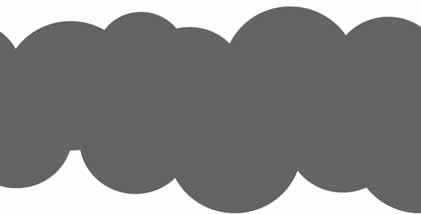


















• What did you learn doing this activity? What was dif












cult about this task?


23
fi
find
community?
can




24 2.4 How
games help us to work together? 1 Do you like team games? 2 Look at the pictures and talk about the games. • Do you know what each game is called? • How many people play the game? • What is the aim of the game? • Do the players need any equipment to play the game? ✓ Research ✓ Collaboration ✓ Communication A C B D SamplePages





































































25 3 Look at the pictures and answer the questions. • What team game did you enjoy? What did you learn about teams by playing it? Talking point What do the team players need to do to win? What is the aim of the game? What happens if the team don’t all pull together? Does it help to have someone leading the team? 4 Play the games with your class. 5 Which games made you all work together? • Were these games good for teamwork? Why, or why not? • Which game was not good for teamwork? • Do a survey and fill in your results on the worksheet. SamplePages
What signs help
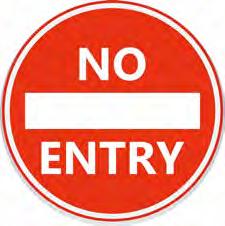
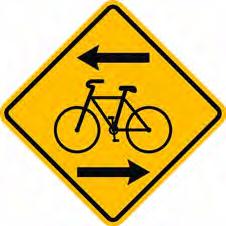

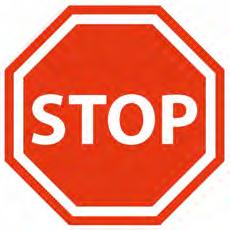
to
26 2.5
us
live together? 1 Have you seen these signs? Answer the questions. ✓ Research ✓ Analysis • What do these signs mean? • Where have you seen these signs? • Why were the signs put in those places? • What would happen if there were no signs like these? 2 Look at the pictogram. Toilets sign Classroom sign Office sign Canteen sign 12345678 This pictogram was made by students at a school, who counted and recorded the number of signs they saw. Ask each other questions about the pictogram. SamplePages
4 Make a pictogram
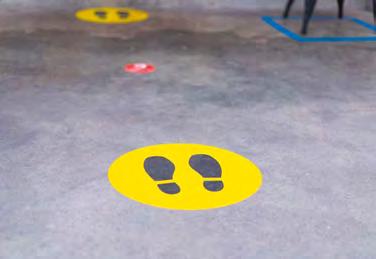


to the
































































27 What do these signs mean? How many classrooms are there in this school? 3 Find and count the signs at your school. • Walk around the school and the school grounds with your partner. • Write down at least five signs that you see. • If there is more than one of the same kind of sign, make a mark for each one you see. For example: Toilet Don’t run Exit
• Now, use the information you have found to make a pictogram. • Record the signs you found on the worksheet. • Draw a picture of each kind of sign in the first column. Then draw signs going along the row, according
number of the signs you saw. • What was challenging about this research and making your pictogram? Did you and your partner share the work? Talking point SamplePages




28 2.6 How can we work together in our environment? 1 Prepare for your trip. • Divide into teams. • Discuss what you will need. 2 What will your team do? • Look at the photographs and the captions. • Decide what your team will do. • Write down your goal at the top of the worksheet. ✓ Collaboration ✓ Reflection We will put in plants. Our team will pick up litter. We will sweep the leaves. We will water the plants. SamplePages



























29 3 Work in your teams. Complete your task. 4 Report back to the class. • How well did your team work together on your task? • What was easy? • What was difficult? • Did you do what you planned to do? • What did you learn from this activity? • If you did this activity again, what would you do differently? Now complete the worksheet. • What did you learn from doing this activity? Talking point SamplePages
Unit2 Final task: Working together
What? Work as a group to research and present findings.
Choose a topic from the ideas map.
Create a bar chart, a pictogram or a table.
Develop a presentation about the topic.
How? Work in groups of 4 or 5.
Make sure every group member has a job to do.
How can you be successful in this task?
Listen to your teacher.
Success means…
We understood the topic.
Everyone had a role to play.
We used the information we collected in this unit.
We represented our findings in a bar chart, a pictogram or a table. Our presentation was well-organised and interesting.
1 Choose a topic and understand the task.
Discuss what needs to be done in your group.
• What information do you already have?
• Do you need to collect more data?
• How will you present your final report?
• Will you use a pictogram, a bar chart, or words and pictures in your report?
• Who will be responsible for each aspect of the task?
at play
We work
map at home at school at work
to communicate in our environment
30
✓ Collaboration ✓ Research ✓ Communication
together
Ideas
SamplePages
for the













31 2 Work in your group. Researcher: to find any extra information you need about your topic. Information checker: to be in charge of checking and organising information. Recorders: to work on the bar chart, pictogram or table. Presenters: to practise what they will say when they do the presentation. Checklist
group • Have you used your worksheets as a source of data? • Do you have any extra information that you need? • Has all the data been carefully counted and recorded? • Is the information clear on your bar chart, pictogram or table? • Do you have a conclusion about what the data means? 3 Present your research findings. • Introduce each member of the group. • Let each person say what aspect of the task they were responsible for. • Then let the presenters give the presentation. • Take questions form the audience after the presentation. SamplePages
Reflection: How successful was your presentation?
a How well did you work together?
Complete the worksheet.
Final task checklist




































Did everyone have a role to play?
Did you share information that you had collected from earlier lessons?



Was your presentation well-organised?
What did someone in your group do to help you?

b What did you learn about working together?
• Did you enjoy working in your group?
• What could you have done differently?
• What did you learn about how teams work?
Before you go
32
SamplePages









































































































